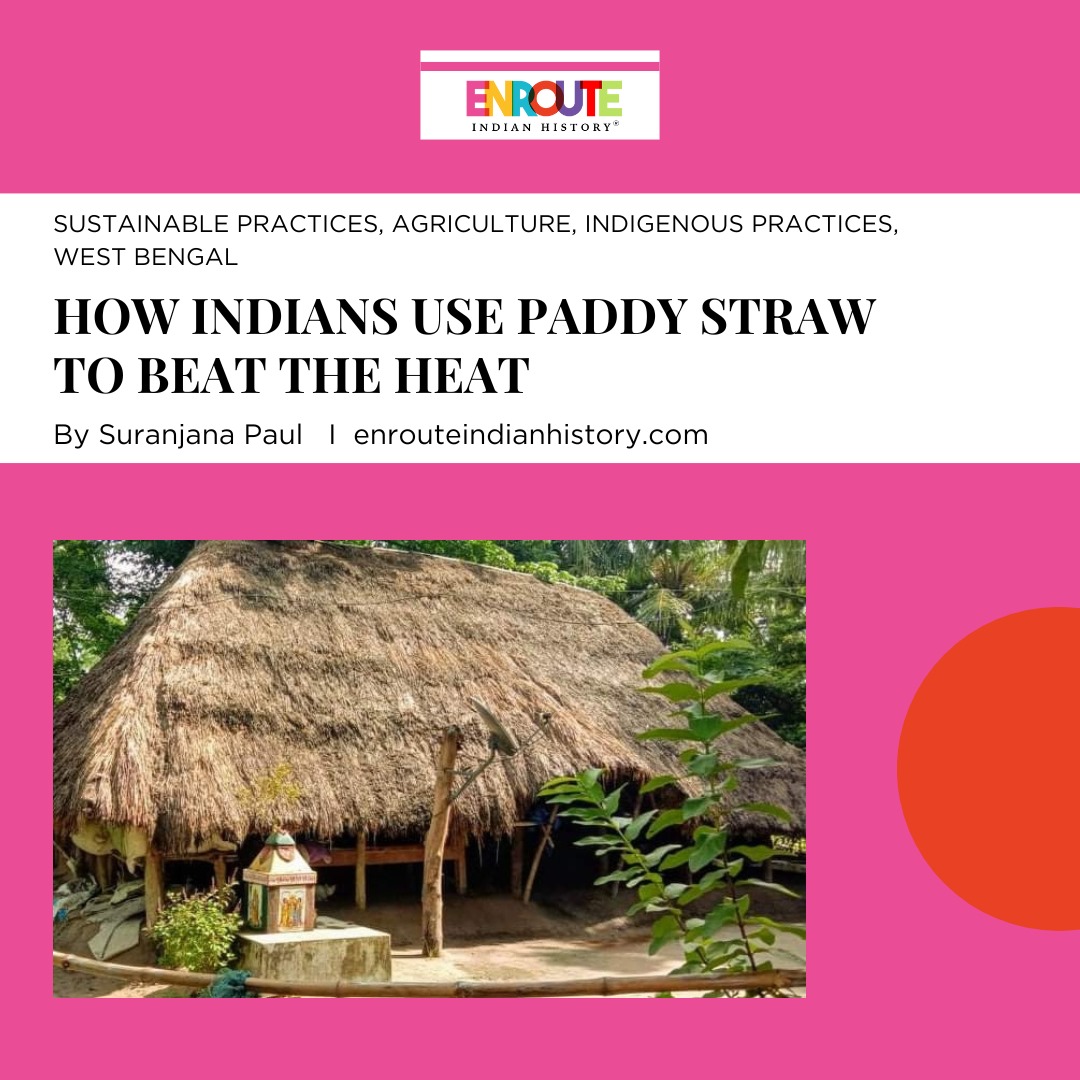RELATIONS ACROSS BORDERS: THE OTTOMAN EMPIRE AND THE NIZAMS OF INDIA.
- enrouteI
- September 4, 2023

The history of the Nizams of Hyderabad is etched in time as a history of riches, rule, and exile. The Nizam-ul-mulk was the title bestowed upon the rulers of the Asaf Jahi dynasty, who ruled over the princely state of Hyderabad within the British Indian dominion. The Last in the line of these ruling Nizams of Hyderabad was Mir Osman Ali Khan, Asaf Jah VII, who was then famous for being the wealthiest man in the world and sported a Jacobi diamond as his paperweight. Apart from his wealth, the name of Mir Osman Ali also became memorialized in Indian history as the one who established an unbroken familial bond with the Caliphate in the Ottoman Empire through the matrimonial alliances of his two sons. Thus, adjoining the two great Islamic authorities of the time. 
(Source; India Today; Mir Osman Ali Khan, The Seventh Nizam Of Hyderabad, And One Of The Richest Men In The World Between 1920 And 1949.)
The Ottoman rulers who had established themselves as Caliphates or the spiritual leaders of the Muslims around the world by the 14th century faced an upheaval in 1924. The year saw the dissolution of the institution of Khalifa and the entire royal family of the Ottoman Empire was exiled on short notice. The grievances of the Ottoman Empire and the appeal of the caliphate reached the Indian land. In India, the Khilafat movement(1919-1924) had already started by the Ali brothers and aimed at the restoration of the seat of Khalifa as the leader of Muslims globally. It was in this context that the voice of Indian Muslims reached Mir Osman Ali Khan, the nizam of Hyderabad, who apart from owning great wealth was also a devout Muslim. Sir William Barton, who was a British resident at the Nizam’s court states that on the appeal of the Ali brothers, the Nizam of Hyderabad Mir Osman Ali started giving a lifetime pension of £4,000 per annum to the Khalifa. Members of the Turkish royal family who had lost their worldly possessions and were now settled in Nice, France survived on the support of Hyderabad’s Nizam. It is described in the history of Nizams as an act of charity.
However, interactions between the princely state of Hyderabad and the Ottomans went beyond just monetary. In the field of education, the prime minister of the sixth Nizam of Hyderabad, Faziuddin Khan Bahadur in 1898 requested the Ottoman Empire for copies of some historical manuscripts to be sent to Hyderabad for study. During the Ottoman Empire’s struggle with foreign forces, Hyderabad acted as a major ally. Funds were collected by the influential figures of Hyderbad’s Nizam government such as Salar Jung and were sent to aid the wounded Turkish soldiers and the orphaned children of the martyrs of Caliph’s army. Mir Osman Ali Khan also provided financial aid to Al-Akhtar, a newspaper published by the Ottoman Empire, and even issued an edict in 1923 for financial aid needed by the people of Turkey. Thus, the Ottoman Empire remained a central concern in the history of the Nizams of Hyderabad due to their religious affinity. Another project which further consolidated the relations between Hyderabad and the Ottoman Empire was the ‘Hejaz Railway Project’, a society called ‘Anjuman Khuddam-i-Kaaba’ consisting of Muslim intellectuals who came together to support this project. Hyderbad’s affinity towards the Ottoman endeavors was reciprocated as they awarded the ‘Hamidiya Hejaz Railway Medal’ for the support provided by the people. However, the most important concern of the Nizam and Muslims of the entire princely state of Hyderabad was regarding the health of the Khalifa. In this regard, the Hyderabad Red Crescent society was very active, they took the responsibility of providing regular information to the people of Hyderabad regarding the state of the Ottoman Empire.
THE OTTOMAN DAUGHTER-IN-LAW OF HYDERABAD’S NIZAM.
While the Caliphate and the Nizam of Hyderabad, Mir Osman Ali Khan were allies working towards the benefit of the Muslims all over the world and the Khalifa in particular. Their partnership was even more consolidated by the marriage of the two Ottoman princesses to Nizam’s sons. The exiled Caliph Abdul Mejid II was looking for a suitable groom for his eldest daughter Durru Shehvar and no one proved a match better than Nizam’s eldest son Azam Jah. Durru Shehvar was the only heir to the seat of the caliphate and was exceptionally beautiful. She was a polyglot well-versed in languages like Turkish, English, Urdu, and French and hence, the mahr demanded for her hand in marriage was fifty thousand pounds—an amount considered to be very hefty by the Nizam of Hyderabad. However, the wedding was later finalized when the Caliph agreed to marry Durru Shehvar’s cousin Niloufer Hanimsulatana to Nizam’s second son, Mozzam Jah within the same amount.
The marriages were performed in a very intimate manner in Nice, France in 1931. The Time Magazine covered the marriage of Durrru Shehvar under the headline ‘Caliph’s Beauteous Daughter’. After the two couples sailed to Hyderabad, Durru Shehvar Begum was awarded the title of ‘Princess of Berar’. It was reportedly stated that the Nizam of Hyderabad used to throw lavish parties to show off his two beautiful daughters-in-law. He even awarded Durru Shehvar with the title ‘Nagina’. Durru Shehvar apart from giving birth to the heir of the Asaf Jahi dynasty was also a great Philanthropist. It was through her efforts that she opened a junior college for girls and even funded the foundation of a non-profit general hospital – Osmania General Hospital.
Furthermore, in 1936 she also laid the foundation of Hyderabad’s Begumpet airport’s first terminal. Durru Shehvar along with her sister Niloufer were modernised women who transformed the Nizam household. They used to pay regular visits to European museums and were attendees at the Paris Fashion Week.

(Source: The Medium; Img1, Princess Durru Shehvar, still gorgeous in London, 1999.
While Durru Shehvar was the eldest daughter, the mother to the heir to the throne of Hyderabad, and the queen of three cities, her sister Niloufer Begum was no less in beauty and talent. Niloufer was known as the ‘Koh-ih-noor of the Hayraba’, unable to produce an heir, her personal life remained a journey with struggles to maintain good relations with everyone in the household. Arvind Acharya has devoted a lot of time studying the private documents and possessions of Niloufer Begum. Her equation with the Nizam of Hyderabad is also one that is under a lot of speculation, having lost her father at a very young age. Arvind Acharya asserts that Niloufer found in Mir Osman Ali Khan a father figure. Some of the private documents reveal that she used to call her ‘Papa’ while the others only addressed him as ‘Your Excellency’. Author and historian, William Dalrymple however denies any claims of close relations between the two.
The most striking feature of Niloufer Begum’s appearance was her fashion sense. Both the Ottoman women brought into the history of the Nizam household, a blend of East and West and Niloufer was the pioneer. Her arrival in the Hyderabad household saw the most elegant draping of the Indian saree. She westernized the Indian saree and preferred pillettes, chiffon, and silk sarees. Many of her sarees were also especially embroidered and were designed by Madhav Das in Mumbai. Her attire however shifted from sarees to off-shoulder gowns as she switched planes to fly abroad. Niloufer Begum’s saree collection was more pastel in color rather than bold Indian tones. Her fashion style and collection of sarees are still studied at the New York Institute of Fashion Technology. Another most significant aspect of her fashion that held a history in itself was her brooch. The brooch that Niloufer Begum used to adorn her sarees was given to her by her mother Adlie Sultana. The brooch was a copy of the French Empress Eugene’s diamond belt buckle which she wore on her visit to the Ottoman Empire in 1869. A jeweler was disguised as a woman to observe the empress closely and make an exact copy of the buckle. However, what was made turned out to be a rose-shaped 40-diamond embedded brooch. Later, Niloufer added a pin to this brooch to suit her sarees.
Apart from being a fashion icon of the history of Nizams in Hyderabad, Niloufer like her sister Durru Shehvar was also a philanthropist. Although she remained childless throughout her marriage with Mozzam Jah, she diverted her attention to the healthcare of her servants in Hyderabad. One such instance is extremely important to quote here. Princess Niloufer Begum had a maid, Rafathunnisa Begum. Rafath during her service to the princess was pregnant and Niloufer used to attend to her health every day. After one day, however, Rafath never returned to work. On inquiry, Niloufer learned that Rafath passed away due to complications and a lack of medication during childbirth. She was so moved by this incident that she ended up establishing a hospital named Niloufer Hospital in Hyderabad so that no more Rafatha would die due to lack of mother and child care. She even trained to be a nurse during World War II.
Apart from the Nizam household, the two Ottoman daughters-in-law had a vibrant social life and were members of the Hydari club. In 1941, Niloufer even decided to organize a play ‘Ondine’ to raise funds for London during World War II. Both Niloufer and Durru Shehvar were leaders of their own time, they denied the traditional zenana living, played tennis, and often attended cocktail parties. However, Marriage for both of them ended in an Unfortunate will of fate and they divorced their respected Husbands. Reports suggest that Niloufer begum divorced Mozzam Jah as she felt vulnerable in the household where being a childless woman was humiliating. To add to that, her husband married again in 1948 and brought in Razia as his new begum. The reason for Durru Shehvar’s divorce is not clear. Arvind Acharya states that the story of these two Ottoman princes represents them as “victims of fate” and highlights that all the wealth of the Nizam of Hyderabad still could not assure happiness in his household. While Durru Shehvar later went on to live in London, Niloufer married again ten years later and remained married until she died in 1989.

(Source; The Medium; Niloufer Begum and Mozzam Jah)
The story of the relationship between the Ottoman and the Nizam of Hyderabad however, did not end with these two marriages. Durru Shehvar’s son Mukarram Jah was declared as the successor to the seat of Nizam. He was also supposed to be the heir to the seat of caliphate however, the will was never finalized. Later, when the privy purses dissolved all the ruling rights, Mukarram Jah moved to Australia where he lived for a while but eventually shifted to Istanbul, Turkey, where he lived until he died in 2023 and was buried according to his wishes in Hyderabad. A book describing the history of the Nizams was written by John Zubrzycki and published in 2006 titled ‘The Last Nizam: The Rise and Fall of India’s Greatest Princely State’. A survey conducted revealed that many of Mukarram Jah’s neighbors, are in Istanbul. Turkey was not aware that the Khalifa was his maternal grandfather. The story of the Nizams of Hyderabad and their relations with the spiritual leaders of Muslims all over the world was not only a sign of prestige but also provided their rule legitimacy as an Islamic ruler of the princely state of Hyderabad.
REFERENCES
- Rahaman, (2022) ‘LEADING ROLE OF WOMEN IN EDUCATION: STUDY OF HYDERABAD STATE (19th AND 20th CENTURIES)’, Telangana State Journal of Social Sciences, 1(1st ed.), pp. 74-83.
- Kutlutürk, (2022) ‘The Nizams of Hyderabad in India and the Support They Provided the Ottoman Empire’, Turkish Journal of History, 78pp. 73-99.
- May 15, 2024
- 6 Min Read


























